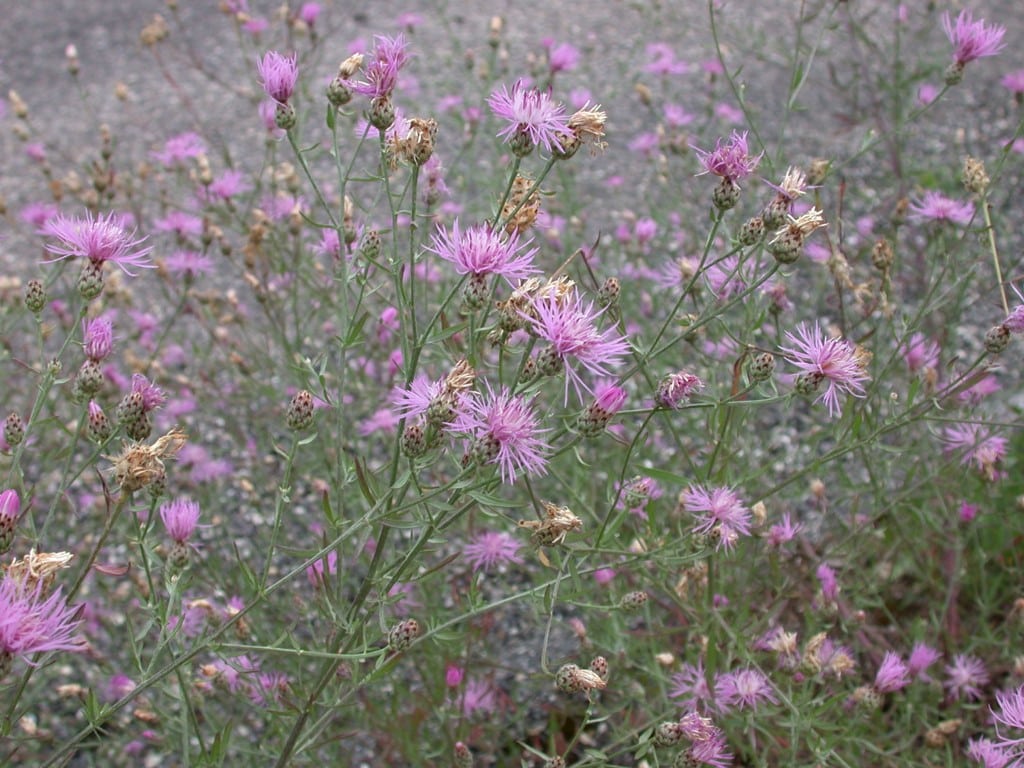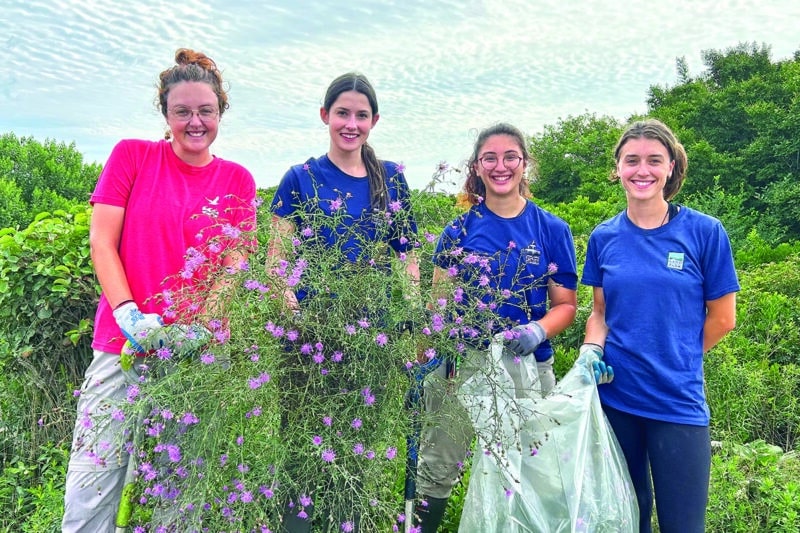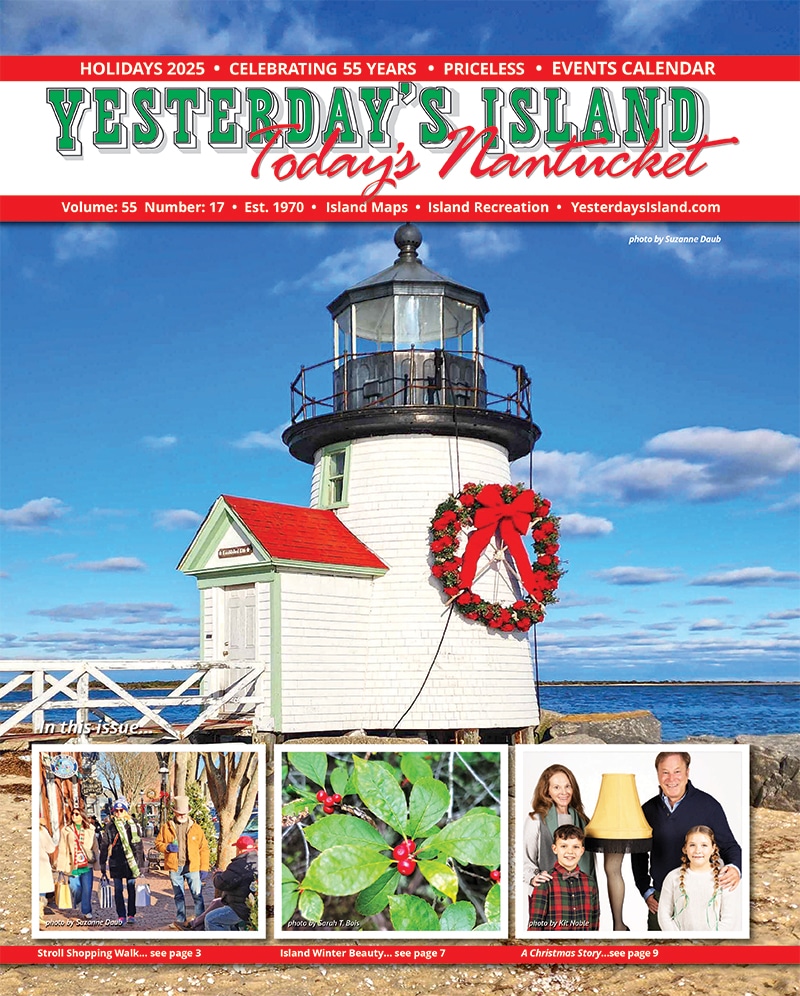Nantucket’s Invasive Plant Species Committee
by Dr. Sarah Treanor Bois, PhD
Director of Research & Education at the Linda Loring Nature Foundation
Over the past two decades there has been a growing problem on-island as more and more non-native invasive plants (and other species) establish and dominate. Some species new to our region don’t cause harm, establishing in small populations without changing local ecology. However, it is the domineering plants that cause economic, ecological, or harm to human health that are managed. For a place which prides itself on its conservation and biodiversity, protecting these resources is of vital importance.
The Nantucket Invasive Plant Species Committee (IPSC) is a standing committee of the Nantucket Biodiversity Initiative. The members consist of people and organizations interested in non-native invasive species issues. Members include people from all the various conservation groups on-island, as well as professionals in the horticultural and landscape trade, gardeners, and business owners. The main facets of the committee are education, eradication, and early detection, not necessarily in that order. As the current co-Chair of IPSC (since 2014), I am proud of all that this committee has accomplished.
The IPSC has been around since the early 2000s. At that time, a lot of effort went into educating about non-native species and the harm some of them can do to the Nantucket biodiversity. In the past 20 years, the species of concern may have changed, but a lot of the messaging is the same. The highest priority is to protect, preserve, and promote native biodiversity. For the non-native species, documenting occurrences, eradicating where possible using the EDRR method: early detection and rapid response. For those species where “rapid response” isn’t really possible, the IPSC has been triaging locations around the island to prevent spread of some populations.
Sometimes the work of invasive species management seems daunting—there is almost too much to accomplish anything. But in the years since IPSC has started, there has been great progress and examples of where the IPSC has been effective. One of the first examples is from 2006, when the IPSC was tasked with Japanese knotweed (Reynoutria japonica) removal at the Commons, the green area across the parking lot from Nantucket Office Products. At that time, Japanese knotweed was growing right up to the edge of the parking lot. In fact, shoots were pushing up through the asphalt!With funding from the partners that owned the area, the IPSC undertook removing first the above-ground materials and then working with contractors to excavate the giant root balls and other below-ground plant materials. It was a huge task! But even 18 years on the results are still good. There is still some knotweed along the wetland edge, but the grass and parking area are devoid of knotweed. It can now be maintained with regular mowing, and the parking lot isn’t in danger of being consumed by knotweed. You can still see the educational signage along Pleasant Street that was installed to discuss the project.

Aside from education, one of the main activities for the IPSC as a group has been our weekly weed pulls that occur during the spring and summer months. These weekly pulling events focus on one species at a time and bring together volunteers, interns, and staff from various conservation and environmental education organizations. It’s an opportunity to have a group focus on one area (many hands make light work), but it’s also an opportunity to get together once a week and catch up or meet new people interested in these topics while contributing to native plant diversity!
In the spring months, the IPSC focuses on garlic mustard (Alliaria petiolata). As an herbaceous biennial, this plant is easy to pull and grows in patchy populations around the island. And while it may seem innocuous, it can still form a monoculture dominating the area in which it establishes. You can read the full information sheet from IPSC at nantucketbiodiversity.org/s/Garlic-Mustard-Info-Sheet.pdf.
As spring turns to summer, we switch from garlic mustard to Spotted Knapweed (Centaurea stoebe), which, I think, has been our greatest success. Spotted knapweed is an herbaceous plant that grows up to about two feet on Nantucket and looks something like a thistle but without the spikes. It small, purple flower heads this time of year with the bracts at the base of the flower marked with dark, upside-down “V,” giving them a spotted appearance. Knapweed grows in disturbed areas like roadsides and bike paths. However, it is also known as a grassland invader. In the western states it is a huge ecological and economic problem invading rangelands. Here on Nantucket, we focus on this species to keep it out of our grasslands. The Nantucket sandplain grasslands are a priority habitat locally and at the state and federal levels. They are host to numerous rare and endangered species, so a grassland invader is of particular concern.
With that threat in mind, our weed pulls start concentrating on knapweed when those plants begin to flower (generally mid-July) and continue late into August. You may have seen us out on the roadways and bike paths this summer, weed tools and contractor bags in hand. Spotted knapweed is allelopathic, which means it exudes a chemical to compete against surrounding plants in the soil. That also means, grabbing it over and over with your hands can cause skin irritation. So, pulling this plant requires wearing gloves. Knapweed has a long taproot, hence the specialized weed tool affectionately known as a “teletubbie” for its unique shape
Even though we still pull this plant every year, we are making great progress. In the early years of pulling, the IPSC regularly spent time along the Madaket Road bike path near Sanford Farm. After about five years of pulling there, the remaining plants were few enough that the Nantucket Conservation Foundation staff was able to maintain the location in-house. Similarly, the area of Heller Way, near Cisco Beach, and the roads leading to the beach have been surveyed and pulled of spotted knapweed for more than a decade. The IPSC used to spend at least three consecutive weeks there with an army of 8-10 weeders. This year, for the first time, we surveyed the entire area to the end of Hummock Pond Road in just one morning. And we came up with just one bag of spotted knapweed. I found myself trying to convince the volunteers who showed up that day that it was actually a problem here historically. Not finding it in great numbers was a huge success and should be celebrated!
So what if it doesn’t grow along the roads and bike paths anymore? Why spend our energies there? Our goal, at IPSC, is to pull where we can make an effective difference. These roadways and paths are leading to some of our most high-quality sandplain grassland habitats. In the case of Heller Way, that is the Smooth Hummocks area owned by the Nantucket Land Bank. In some years, when the amount of spotted knapweed has exceeded our ability to effectively manage it, the IPSC has worked with the Nantucket DPW to mow the road edges prior to the knapweed setting seed. Mowing won’t kill the plant, but mowing at the right time can prevent seeding or at least reduce the capacity.
This summer, our IPSC team has focused the past three weeks at the Boulevard and Lover’s Lane area. The knapweed that has established there was extremely dense in some spots. Our team did an amazing job and, hopefully, that means that in 2025 the job will be that much smaller. One benefit of pulling along a highly popular bike path is that we get a chance to talk to people about what we’re doing. People, I think, generally assume we are picking up trash until they see our weird weed tools. Once we point out the plant in question, some say they’ve seen it and now will remove it from their yards. As the saying goes, “spread the word, not the weed.”
So how can you help in the fight against spotted knapweed (or invasive plants in general)? You can join us for any weed pull. Reach out to Sarah Bois, co-chair of the IPSC, at stbois@llnf.org to be added to our pull list. You’ll receive the location each week through the end of August. You can also focus your attention to your own yard and remove and invasive plants you find there, especially spotted knapweed.
From Lucy Leske, active IPSC founding member and former co-chair, “I am really pleased with the work that the IPSC has done over the years, especially around education and collaboration with other organizations to manage populations of invasive plants. I wish we had made more progress, but it really is an uphill battle. It does appear, however, that the knapweed is really knocked back in sensitive areas, and we CAN make progress with knotweed if we put muscle behind it. Loosestrife and other invasive are no longer available for sale in our nurseries. So I feel it has been worthwhile, and we shouldn’t stop!”



